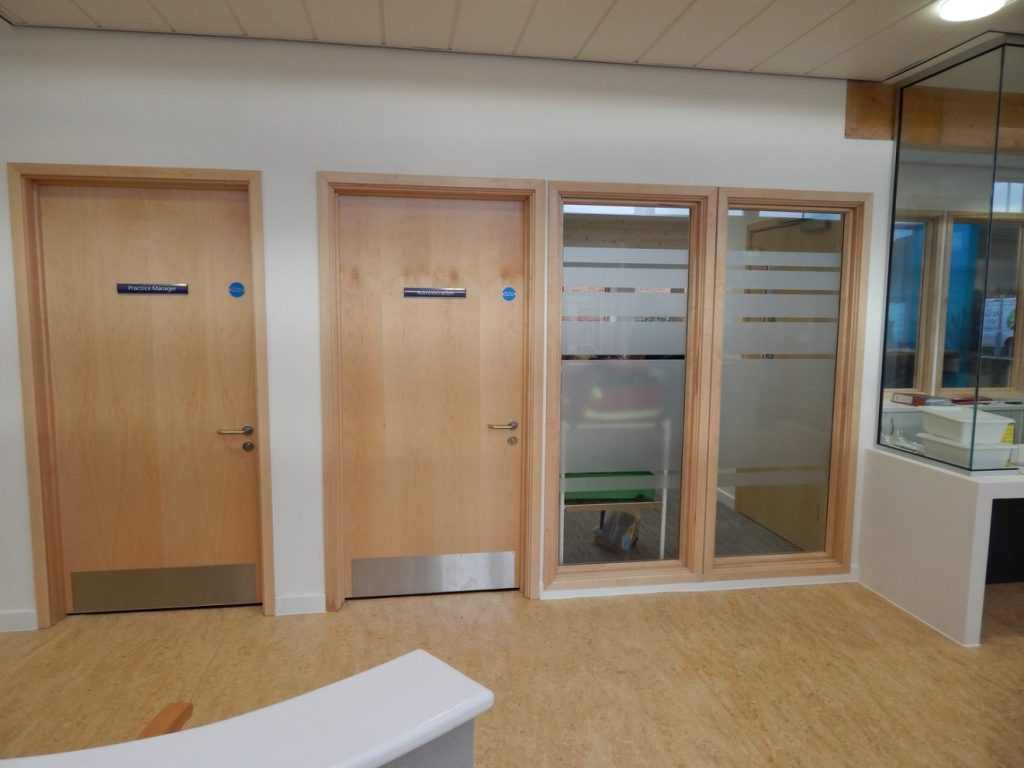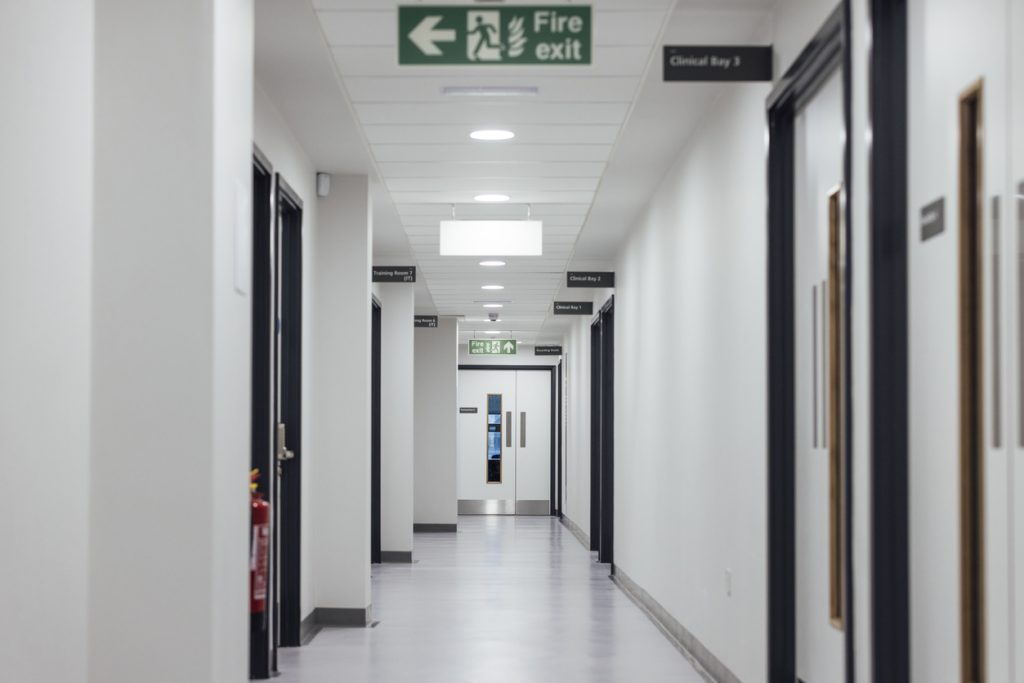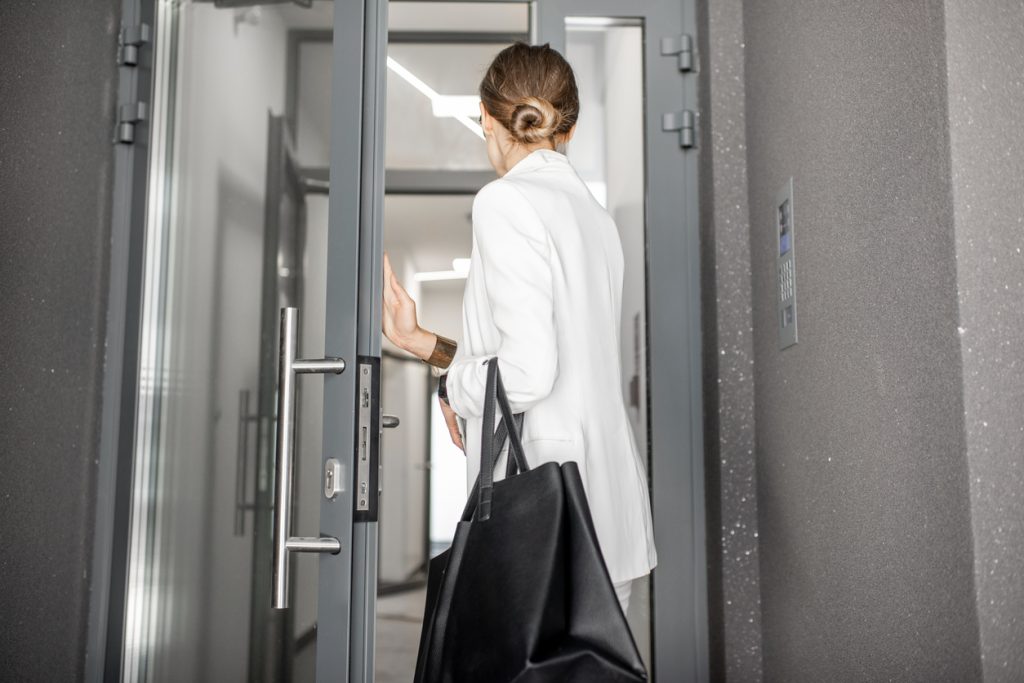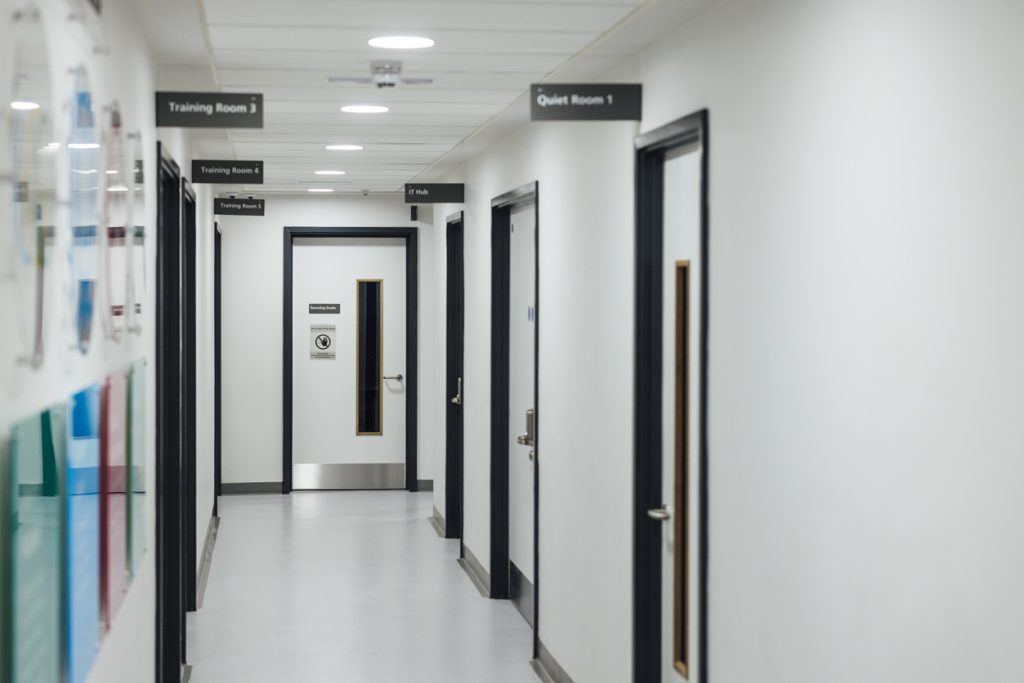To ensure a fire door functions correctly, a self-closing door closer is installed to ensure it stays shut in the event of a fire. But why do fire doors need to be self-closing, and what are the legal requirements?
Table of Contents
Do fire doors need to be self-closing?
It is a legal requirement in the UK for fire doors to be self-closing in case of a fire.
Fire doors must be fitted with closers to ensure they shut correctly, preventing the spread of fire and smoke. This is particularly important for multi-occupancy buildings like residential flats, student accommodation, schools, hospitals, care homes and hotels.
Landlords and businesses must adhere to fire safety laws and building regulations, which mandate the self-closure of fire doors on all non-domestic premises.

What are fire doors?
Fire doors are designed to resist the spread of fire and smoke between separate areas of a building, providing occupants with a safe escape route.
Fire door manufacturers must prove that their doors can resist fire. Fire doors must provide at least 30 minutes of fire resistance and adequate smoke resistance.
Correct installation is also crucial. Even slight errors, like gaps between the frame and the wall, mean the door won’t work correctly if a fire breaks out.

How do self-closing doors work?
Self-closing fire doors are equipped with fire door closers. These controlled door-closing devices use an electromagnetic hold-open door closer or swing-free arm to ensure the door automatically closes after being opened.
In a building, it’s important to prevent fire and smoke from spreading between different areas. Having a self-closing mechanism on a fire door helps contain fire and protect people.
The benefits of self-closing fire doors
Self-closing devices on fire doors are integral to building safety, reducing the risk of property damage by containing the spread of flames and smoke.
The automatic closing function ensures that fire doors are always in a closed position when not in use, which is essential for the safety of the building’s occupants and fire protection.

The legal requirements for self-closing fire doors
Installing self-closing fire doors is not just a safety recommendation but a legal requirement for landlords and many businesses. A self-closing device is a standard feature on a fire door to ensure the safety of the building occupants.
According to Fire Safety: Approved Document B and Scottish Government guidelines, self-closing fire doors are required on:
- subdividing escape routes to separate two or more storey exits
- subdividing corridors every 12m in length
- subdividing a dead-end condition in a common corridor exceeding 4.5m in length
- protecting a staircase enclosure from a circulation space
- doors opening onto external escape stairs
Fire door closers must be fitted to these doors and comply with BS EN 1155 or BS 5839: Part 3.

Residential and commercial buildings
In residential buildings such as hotels and student accommodation, all fire doors need a self-closing device.
Fire doors leading into cupboards or risers may have a Fire Door Keep Locked sign instead of a self-closer, as these rooms are non-habitual and should be kept locked shut.

Flats and multi-occupancy buildings
In flats and multi-occupancy buildings, self-closing fire doors serve as a critical line of defence by containing fires within a single unit to protect exit routes and other building parts.
Automatic door closers are commonly used to ensure that these doors close reliably after each use, safeguarding the escape routes for all residents.
Flats and HMOs need door closers installed on the front door of each flat and all fire doors between habitable rooms and the hallway or stairwell.
A self-closing fire door is required for an integral garage door in houses and bungalows.

Can fire doors be wedged open?
Fire doors should never be wedged or propped open and must remain closed to prevent fires and smoke from spreading.
You can install electromechanical hold-open devices that keep a door open in areas of a building with high foot traffic, such as corridors. If a fire alarm goes off and the door is open, the door will automatically close to seal the area.
Features of door closers
When selecting a door closer, it is essential to consider the door’s size and weight, its location, and how frequently it is used.
The door closer power size you need depends on the weight and size of the door. Door closers come in six power sizes, ranging from 1 (lowest) to 6 (highest).
A door with a high volume of traffic, such as a hospital or school, should use a Grade 1 door closer, which is suitable for high-traffic, commercial applications. A light-duty door closer can be used for doors with low to moderate usage.
Maintenance for self-closing fire doors
Regular maintenance is vital to keep self-closing fire doors working properly. This includes checking the closing speed, making necessary adjustments, and ensuring the closers are in good condition.
Regular checks are necessary to ensure no warping of the fire door leaf, which could impede its ability to swing freely and seal properly against the door frame.
Properly maintained doors are vital for the safety of a building’s occupants, as they guarantee that the doors will close securely in the event of a fire.
Our fire doors
Fire doors with self-closing devices are essential to a building’s fire safety system.
Traynor Williams is a leading manufacturer of bespoke fire doors and frames, offering various door styles and finishes, including wood veneers and paint-grade options.
We can supply certified doors for any project, independently tested and accredited by UKAS bodies.
